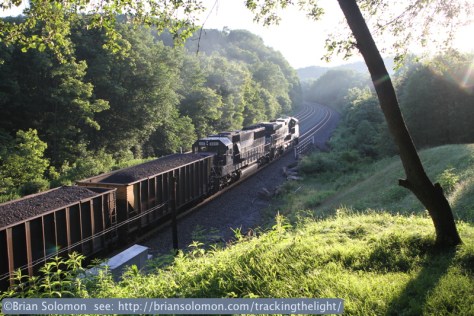On January 15, 1953, Pennsylvania Railroad GG1 electric number 4876 leading the Federal Express from Boston lost its airbrake and careened out of control on approach to Washington Union Station.
The train crashed most spectacularly and old 4876 sunk through the floor of the station concourse. It made national news and photos of the GG1 in the debris of the station was seen on most major papers across the country.
That wasn’t the end of 4876. The locomotive’s remains were remanufactured by the Pennsylvania Railroad and 4876 was restored to traffic. It operated for another 30 years.
In the late 1970s and early 1980s, my family and I made a project of photographing 4876. At that time it was operated by NJDOT the precursor to today’s NJ Transit.


Last April (2017) in Basel, Switzerland, I saw a model of the famous GG1 in a shop window.

Less than a month later (May 2017), I photographed New England Central 608 at State Line crossing in Monson, Massachusetts; and this photo’s camera’s pre-assigned sequential file number was . . . (oh just take a wild guess—first four digit number that comes to mind).

NECR_3809_w_608_State_Line_Monson_DSCF4876.jpg. Oh look, calendar light! Hmmm.




























































































































































